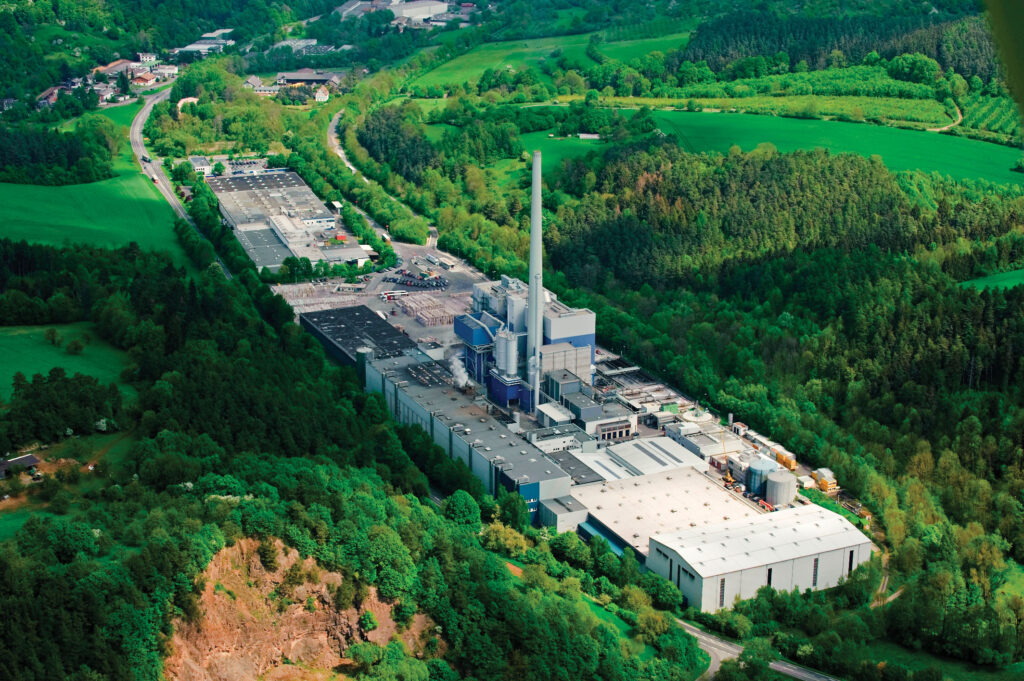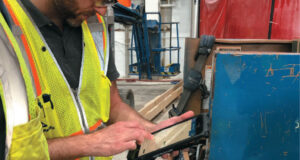Headquartered in London, UK, packaging giant DS Smith operates numerous mills and production facilities across Europe, as well as two paper mills in the US. Employing some 30,000 in 34 countries, the company is at the heart of the revolution in packaging as e-commerce comes to the fore and circularity of products becomes a necessity. DS Smith is at No. 11 on the latest Paper360° Top 75 list of the world’s largest companies defined by annual turnover (see page 34).

Recently the company announced a collaboration with Trimble, a California-based industrial technology company, to advance digitalization at its paper mills in Europe using Trimble’s Wedge data mining platform. This followed a successful trial at DS Smith’s Kemsley mill in the southeast of the UK, which has already led to implementation of the platform at the company’s Viana mill in Portugal. The next mills set to implement the Wedge platform are two in Germany: Witzenhausen and Aschaffenburg.
Paper360° Senior Editor Mark Rushton spoke to Guy Lacey, next generation technology director at DS Smith, about the further digitalization of its mills across Europe.
P360: Can you tell us why the Kemsley mill was chosen as a trial for Trimble’s Wedge data mining software?
Lacey: Kemsley is the largest mill in our European paper mill network of 14 mills (plus two mills in the US) producing 850,000 metric tpy of corrugated case materials (CCM) and plasterboard liner. It has a very large database of process data from multiple systems over at least seven years and collects almost 120 million data-points every day. It was the ultimate test for us for any data visualization, trending, and analysis platform.
Why did DS Smith choose the Wedge data mining platform?
With a huge amount of data in our business, we needed a platform that could dive deep into this data to give insights that allow improved process control and, ultimately, product performance. A number of individuals in our business had experience with Wedge from previous roles and were strong advocates of the platform—this gave us confidence in Wedge as the platform to trial.
Can you give us some details about the platform and technology chosen?
The Wedge platform gave many benefits that led to our decision, but ultimately the goal was to provide a user-friendly system that enabled basic and more advanced levels of analysis to most users at the paper mill. Also, the Wedge team at Trimble were very professional and we were able to get up to speed very quickly with their support.
Can you tell us what difference it has made to production at the Kemsley mill?
We have seen many benefits from the Wedge platform and use it extensively in our lean manufacturing programs to drive consistency in performance and quickly recognize and correct any deviations. Its widespread application means we have many examples of where it has impacted positively at Kemsley—de-inking, stock preparation, paper machines, and waste-water treatment are all now on one platform.
Was there a learning curve for personnel when implementing the platform at DS Smith mills?
Yes, as always; the more times we run the introduction, the better we get at rolling it out. As our network of “super-users” starts to build, we can share and improve from the learnings. Having a greater network of users has shortened the time it takes to bring the platform into use.
Is there a predictive maintenance element implemented into the platform?
While focusing on the traditional process engineering functions, we are expanding the use of Wedge into process analysis that will flag the need for maintenance intervention such as pump performance or refiner plate wear. Our priority has been to give our operators access to a tool to enable real-time analysis.
Is there any automation connected to the platform?
The overwhelming majority of the automated plant is connected to the site historian, where we store all the data from the processes for many years. That then connects to Wedge so we are able to view data across all aspects, regardless of source. We can also connect data sources directly to Wedge, given the flexibility of the platform.
What prompted DS Smith to choose its German mills for the next stage? How long does implementation take and when will those mills be running the platform?
Our expansion of the platform started in our kraftliner mill in Viana due to the high level of technical complexity of an integrated mill and the desire of the local team to build a higher level of process data manipulation from an already high baseline.
Is there much involved in installing the Wedge platform?
We have found it to be a very simple process aided by our first-class colleagues in our IT and operational technology (OT) communities—but also with Trimble’s Wedge team. This is due to the focus DS Smith has on data; in these mills we already have an extensive process historian and single-source, so it speeds the ability to connect.
Can the platforms at the mills be managed simultaneously from a particular site? Is there a central production management location?
By having Wedge used as the platform across our mills, we can build the competency to view data and live processes from any location. This brings with it huge benefits such as best-practice sharing, benchmarking, and group problem-solving with experts from around our network.
When do you foresee other DS Smith mills coming on stream with the platform?
The focus is on completing the two German mills in 2021 and we will then review the success and adoption of the platform before planning any further mills.
Ultimately, how does the platform affect the bottom line at DS Smith mills where the platform has been implemented?
Wedge has provided benefits in all manner of areas; I’ll just name a few. First, it fits with our sustainability agenda by allowing very accurate and real-time analysis and benchmarking of energy consumption—this has already improved the quality of projects focused on carbon reduction. We also see significant improvements in process variability and run-to-run performance given the ability to quickly identify golden batches, center-lines, and any deviations. These examples, of course, contribute to profitability, but more importantly, support our end customers in their performance.
 Paper 360
Paper 360

